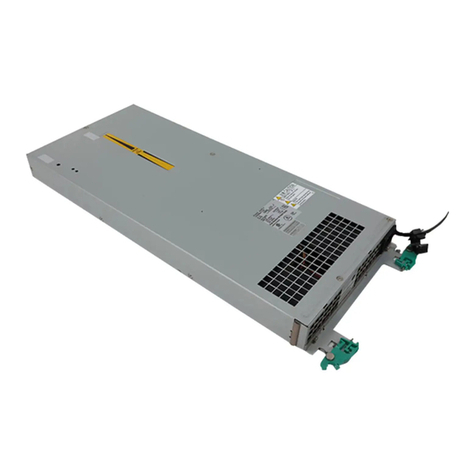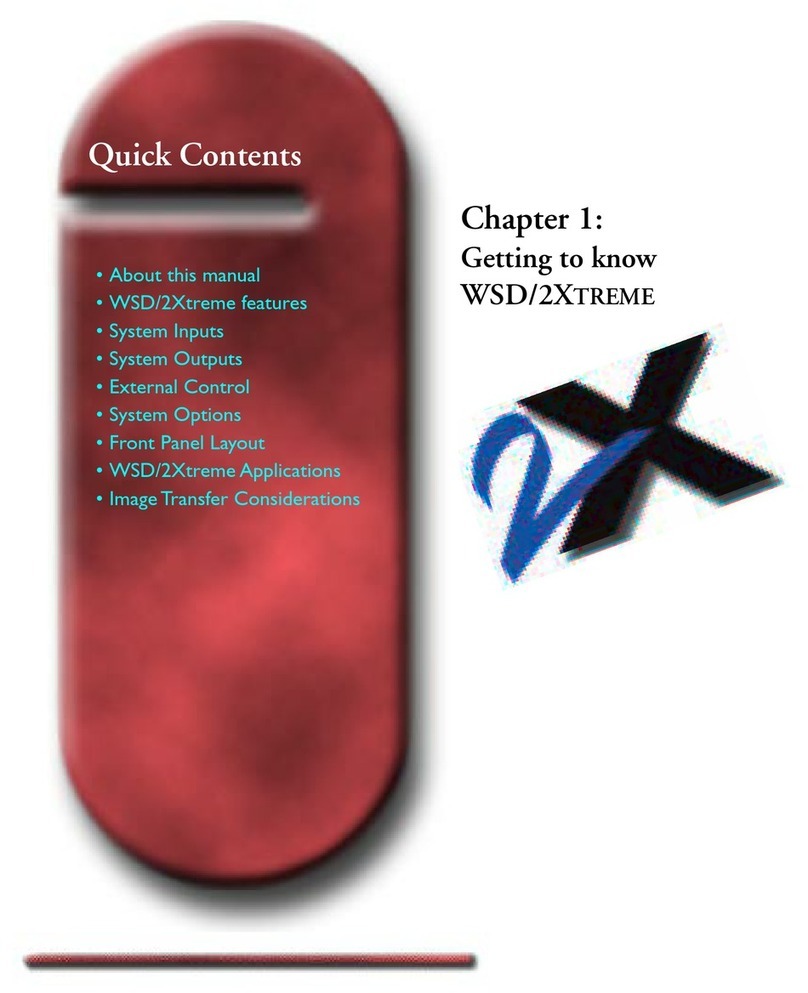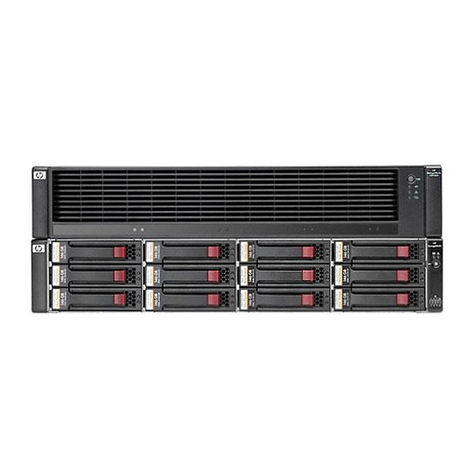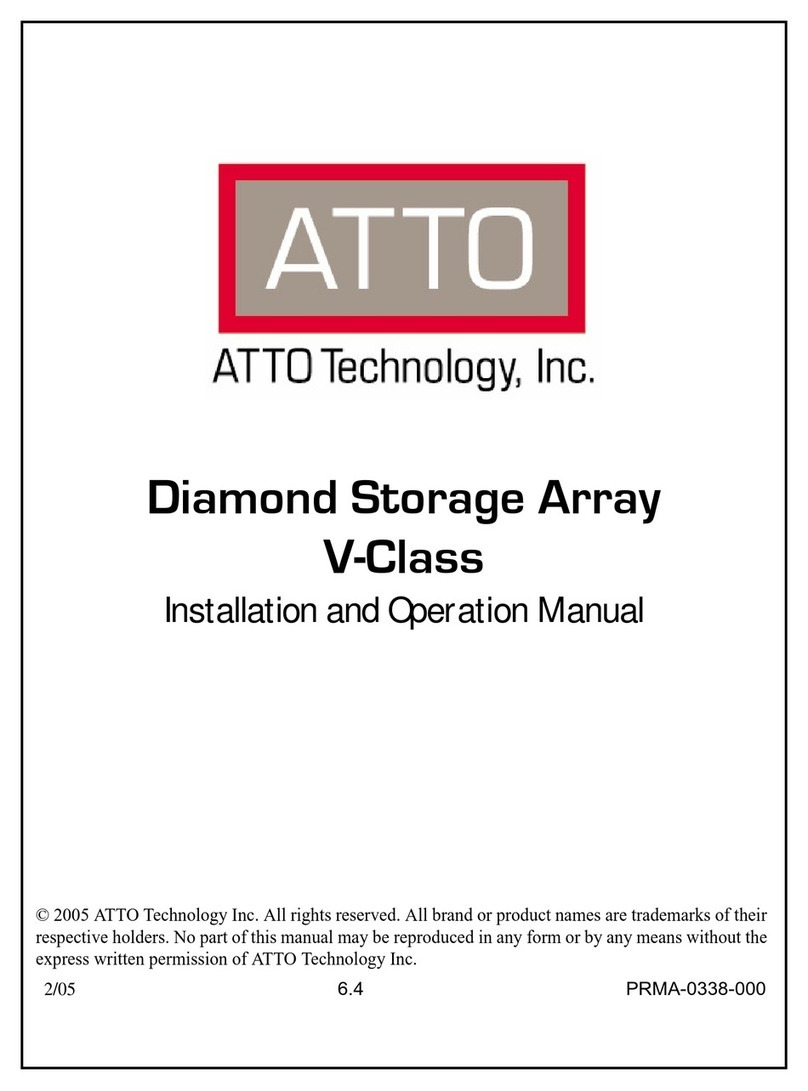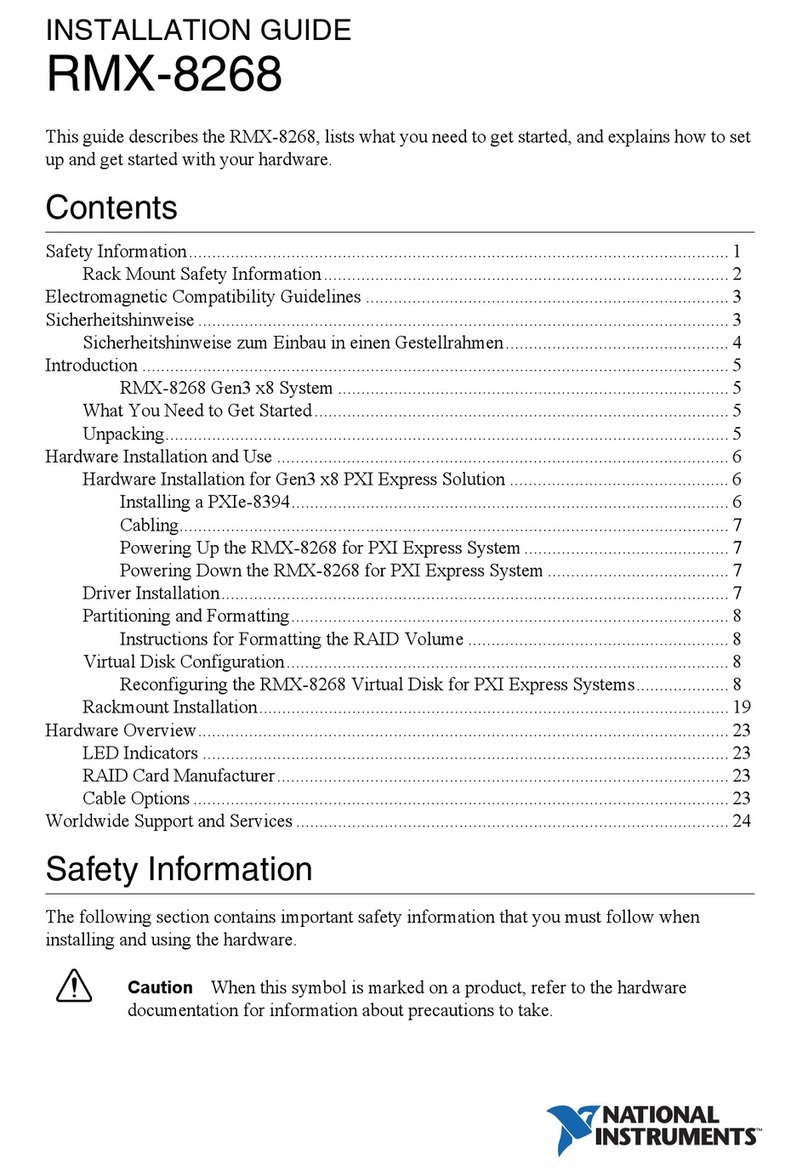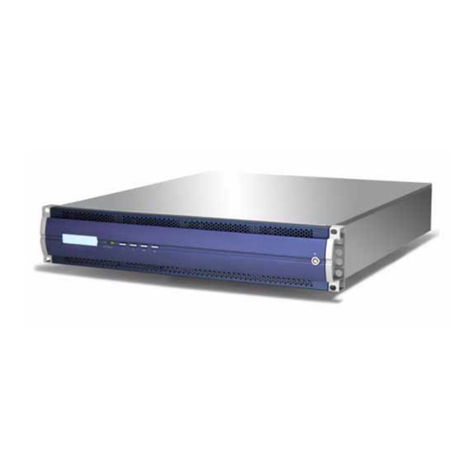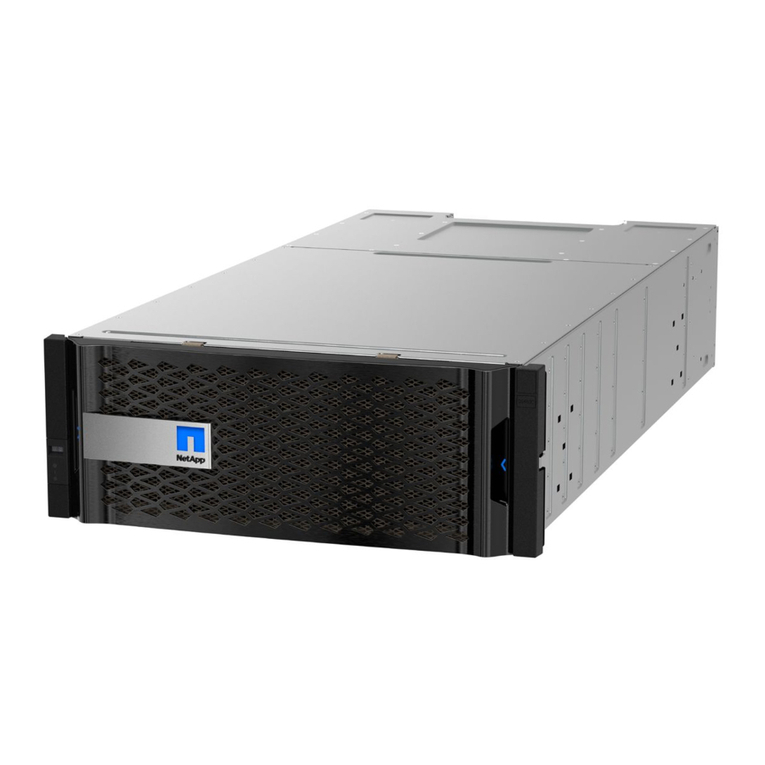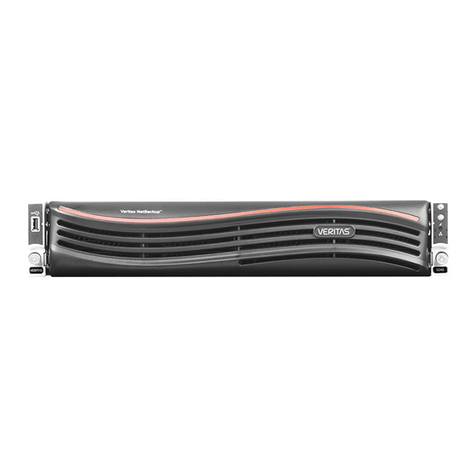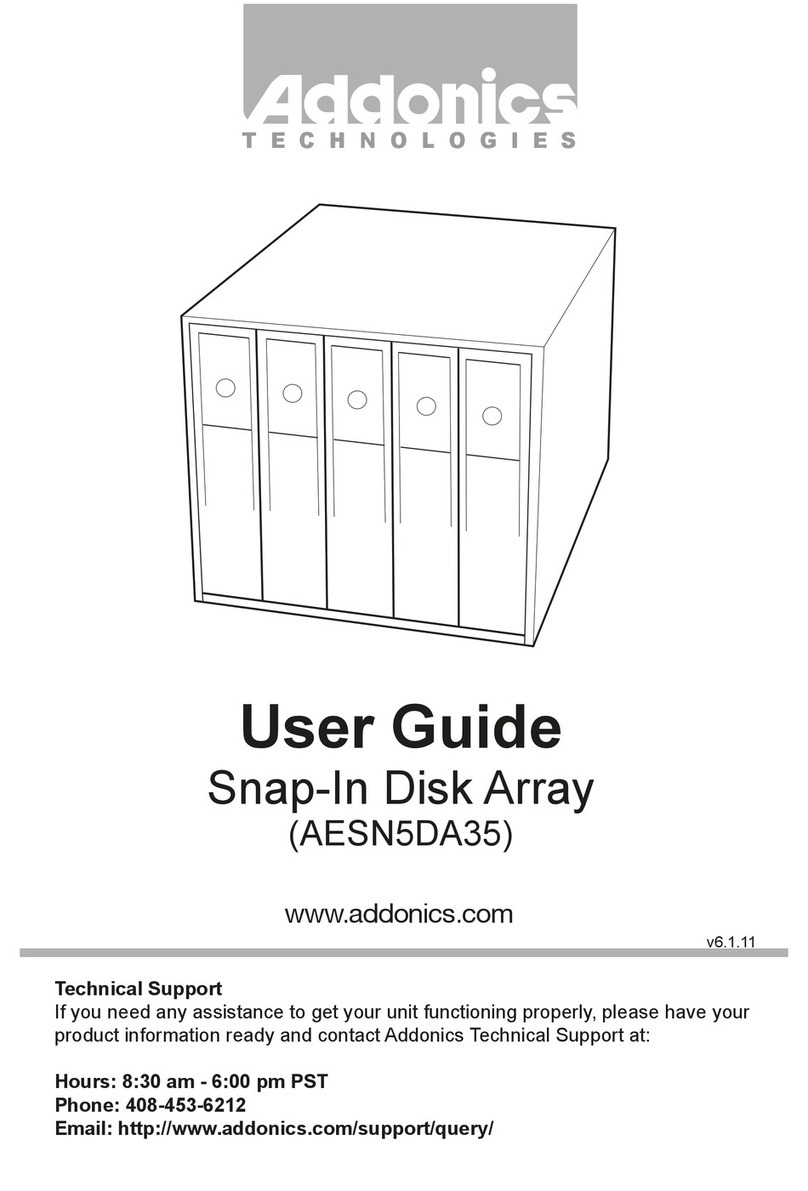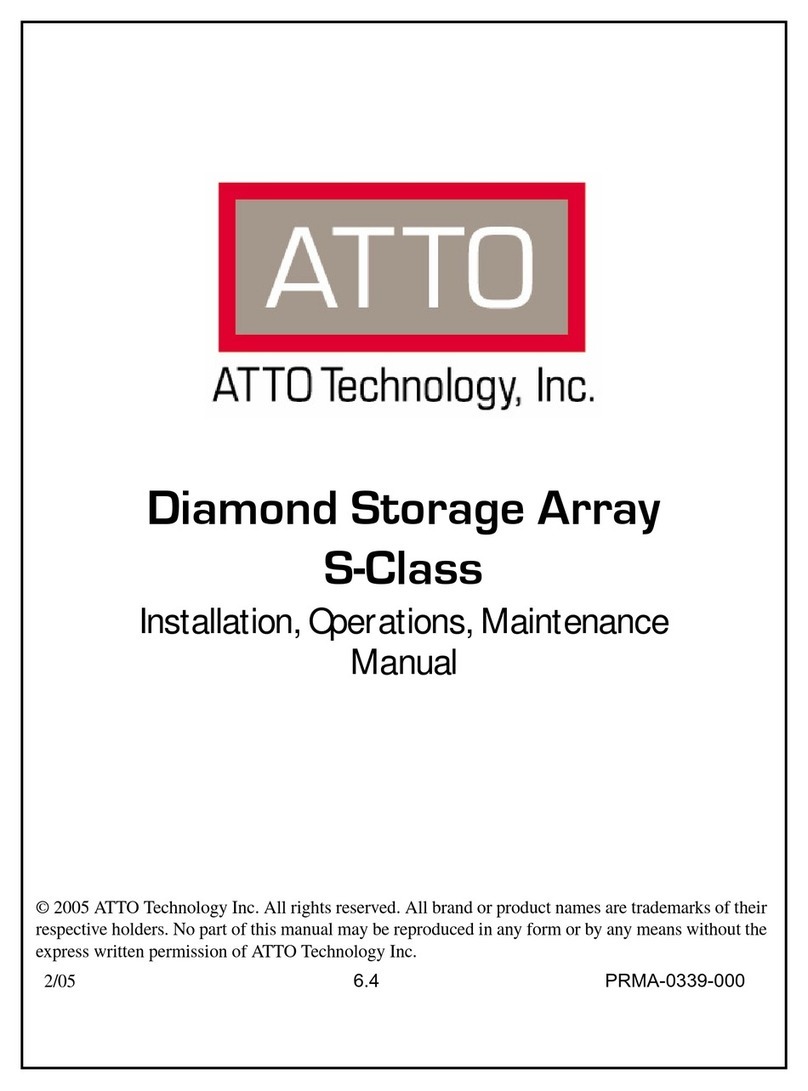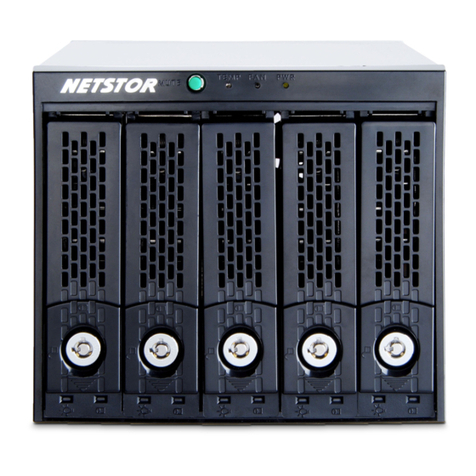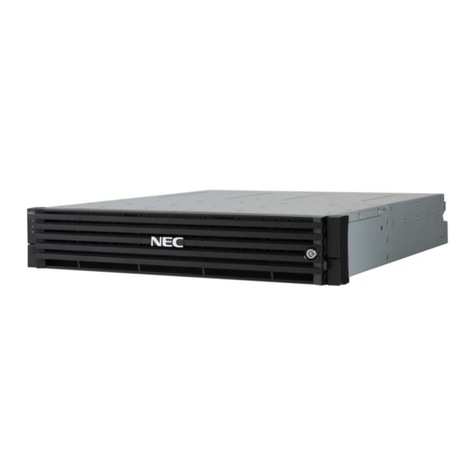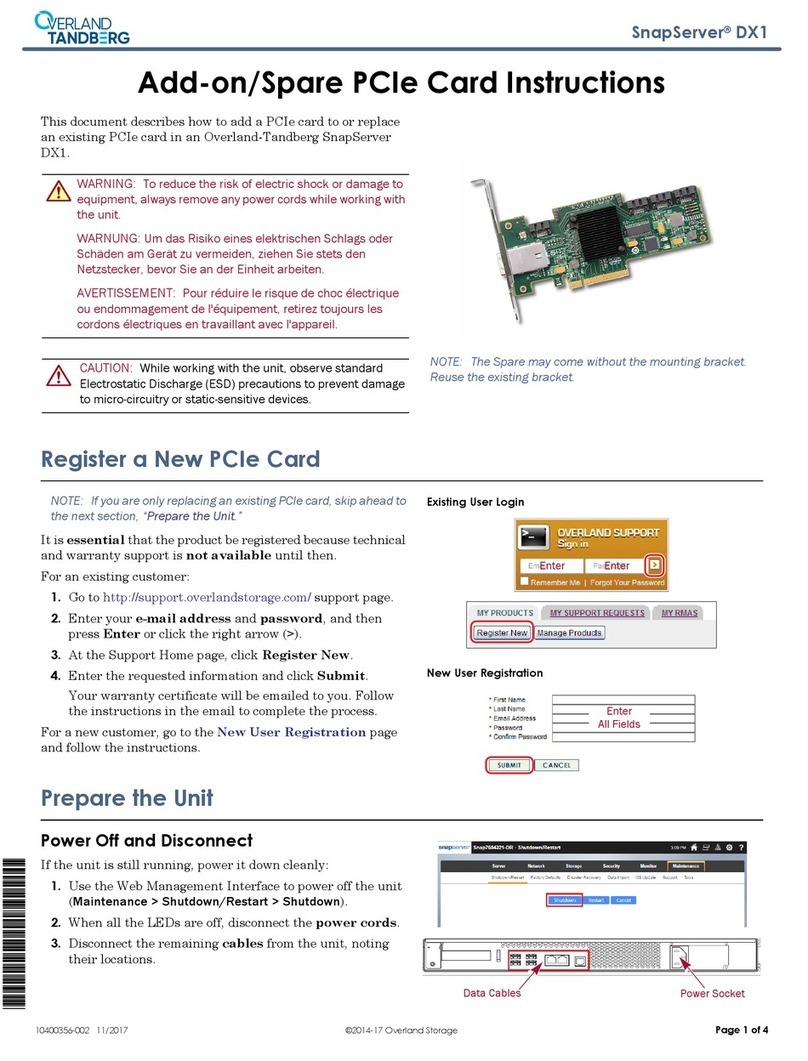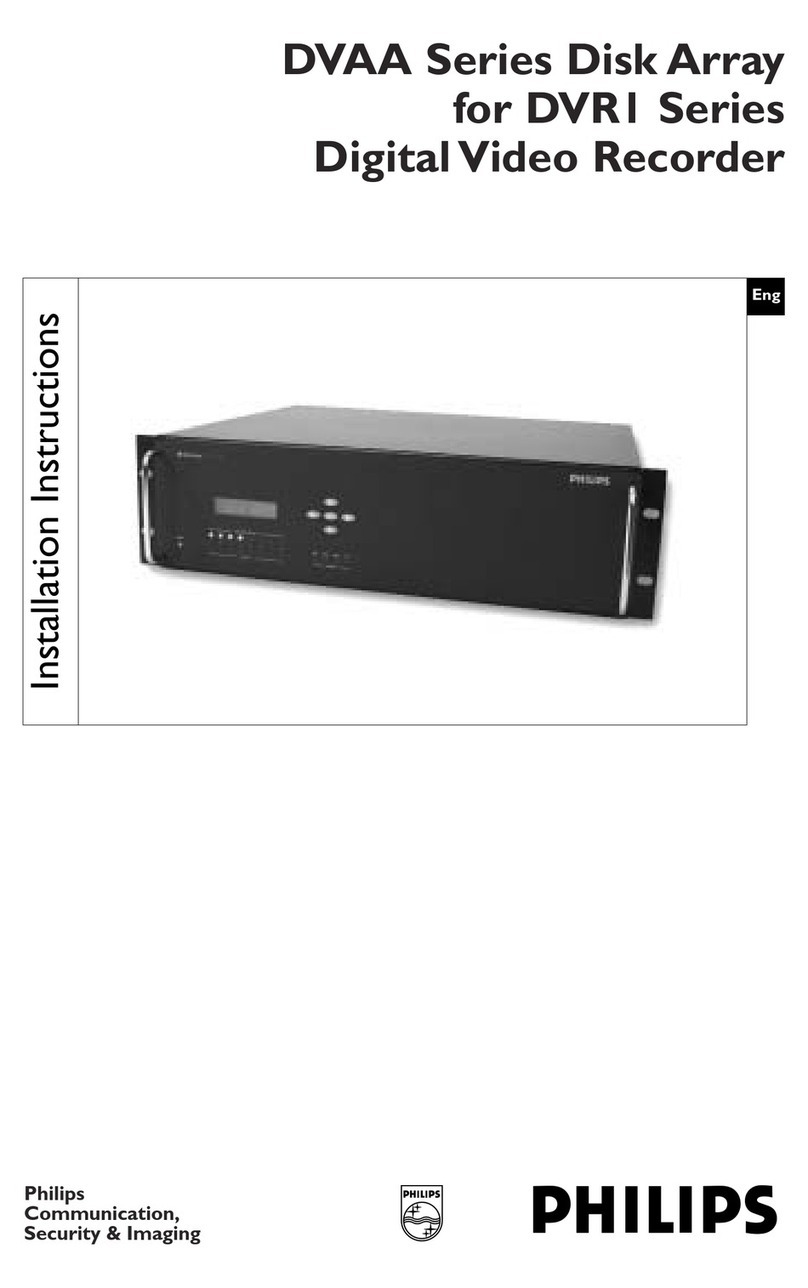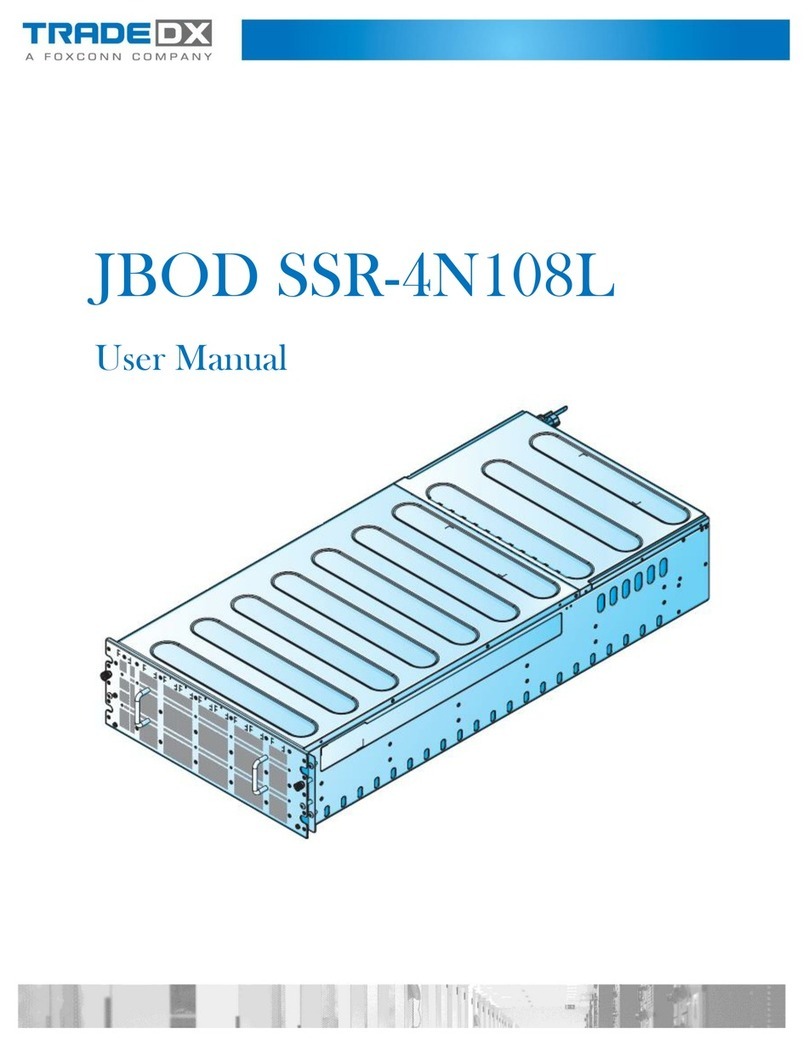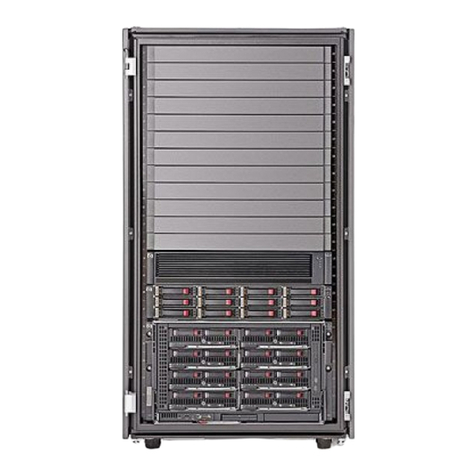
WARNING: Do not force the levers to close while you insert drive
modules into the NR710C enclosure. If a lever does not close
smoothly, draw out and inlay the drive module again, and then
press the lever to close.
5. Insert the drive module into the NR710C enclosure correctly
until its lever appears to shut, and then press the lever to
close until it clicks to ensure that the drive module is within
the enclosure.
6. Go over steps 2 to 5 again for further drives.
7. Connect one end of USB 3.0, eSATA, or FireWire 800 data
cable to the USB 3.0, eSATA, or FireWire 800 connector on
NR710C. Make sure the connector is fastened to the
enclosure.
8. Connect the other end of USB 3.0, eSATA, or FireWire 800
data cable to the USB 3.0, eSATA, or FireWire 800 connector
on laptop or motherboard/add-on card inside desktop PC,
server, or workstation. Verify the connector is firmly conjoined.
9. Connect one end of power cord to the power cord receptacle
on rear of NR710C enclosure and the other end of power
cord to the outlet. Verify the power cord is firmly connected.
10. After the power cord is connected, you can switch on
NR710C and the computer.
RAID configuration can be set up via user-friendly GUI or front
comprehensive LCD.
•For RAID configuration via user-friendly GUI on
Windows operating system:
1. Copy the folder RAID_AP_v1.8 from the CD to your computer.
2. Open the folder RAID_AP_v1.8 from your computer, and then
open the sub-folder Netstor_RAID_Server. Execute program
ManagementServerSetup.
3. Go to folder Netstor_RAID_AP under RAID_AP_v1.8, and
execute RAID_AP_v1.8, and then an interface shows up.
4. After the interface appears, you are required to input data for
three entries: the IP address, the user name, and the
password, and then input localhost for the IP address, admin
for the user name, and 111111 for the password. After you
input the data, click Connect.
5. Click C1 at the left side of the interface, and then click Create
RAID at the top side of the interface.
6. Select the disk drives you want to use for RAID, and then
select a RAID level from RAID 0 to RAID 10. After you select
a RAID level, click Apply.
7. A confirmation of RAID configuration shows up, and
click Yes to continue, and then the RAID will be
created.
•For RAID configuration via front comprehensive LCD:
A control keypad and an LCD are provided in front of the
NR710C enclosure. RAID management can be configured with
the keypad and the front comprehensive LCD.
After NR710C is turned on, the headline “Netstor Hardware RAID”
appears on the LCD. Press any of the four buttons to enter the
main menu. There are four entries, Quick Setup, Disk Manager,
RAID Manager, and System Manager, in main menu, and users
are allowed to use the four buttons provided to configure the
NR710C system.
1. Right click My Computer, and then select Manage.
2. Click Disk Management from the left column of the
window. If a dialog that reads Initialize and Convert
Disk Wizard shows, click Cancel to close it. All the
hard disk drives will be identified and listed by the
system. Right click the device from Netstor, and then
choose Initialize Disk.
3. Right click the bar that indicates the disk for the RAID
system, and then choose New Partition.
4. Follow the procedures from the New Partition Wizard
to complete the partition.
5. After the partition and the format, go to My Computer
and you will see the newly created volume.
Note:
Operating systems that allow disk volume larger than 2
Terabytes (2048 Gigabytes) include:
1.Windows Vista, Windows 7, and Windows Server 2008
2.Mac OS X 10.4 or later versions
3.Linux 2.6.23 or later versions
For detailed information on RAID configuration via GUI or
LCD, please see System Configuration Guide.
If you have any questions, please contact your regional
distributor, or Netstor Technology, Taiwan.
5. Quick RAID Configuration
6. Disk Partition and Format
6F, No.1, Alley 16, Lane 235, Baoqiao Rd., Xindian City,
Taipei County 231, Taiwan (R.O.C)
Tel: +886-2-2917-1500 Fax: +886-2-2918-1260
Netstor Technology Co.,Ltd.
NR710C External 5-bay USB 3.0, eSATA, FireWire 800 interfaces to SATA RAID Subsystem
•For Windows operating system
